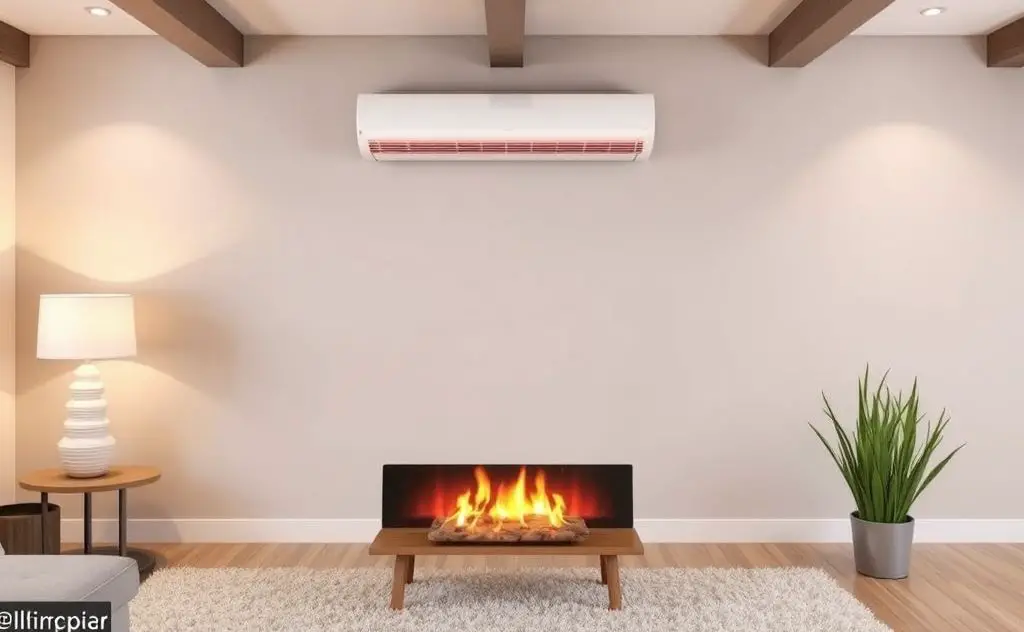The installation cost of a radiant heater typically ranges from $500 to $2,500, depending on the type, size, and complexity of the installation.
Radiant heating systems provide comfortable, efficient warmth by transferring heat directly through floors, walls, or ceilings. Unlike forced-air systems that blow heated air through ducts, radiant heaters warm objects and people in a room through infrared radiation. This article breaks down installation costs for different radiant heater types and what factors affect pricing.

Types of Radiant Heating Systems
There are three main types of radiant heating systems, each with different installation requirements and costs:
Electric Radiant Floor Heating
Electric systems use heating cables or mats installed beneath floor surfaces. These are typically the least expensive to install but most costly to operate long-term. Electric radiant heat works well for small areas like bathrooms rather than whole-house heating.
Hydronic Radiant Floor Heating
Hydronic systems circulate heated water through tubing under floors. While more expensive to install, they’re highly efficient and ideal for whole-home heating. The system requires a boiler to heat water and pumps to circulate it.
Radiant Air Floors
These systems use heated air circulated through floor ducts but are rarely installed in homes due to inefficiency. They’re not generally recommended for residential use.

Radiant Heater Installation Cost Breakdown
| System Type | Material Cost per Sq Ft | Installation Cost per Sq Ft | Total Cost per Sq Ft |
|---|---|---|---|
| Electric Radiant | $5-$10 | $10-$15 | $15-$25 |
| Hydronic Radiant | $6-$20 | $8-$15 | $14-$35 |
Total costs for a typical 1,000 sq ft installation range from $3,000 to $12,000 depending on system type and local labor rates. Hydronic systems generally cost more but provide better long-term value through energy savings.
Factors Affecting Installation Costs
Home Size and Layout
Larger homes require more materials and labor. Complex layouts with many small rooms may need additional zoning controls, increasing costs.
Floor Construction
Concrete slab installations (“wet systems”) typically cost less than wood subfloor installations (“dry systems”). However, concrete adds significant weight that may require structural reinforcement.
Existing vs. New Construction
Retrofitting radiant heat into an existing home costs 30-50% more than installing during new construction due to demolition and modification requirements.
Local Labor Rates
Installation costs vary significantly by region. Urban areas with higher living costs typically have higher labor rates than rural locations.
Floor Coverings
Tile and stone work best with radiant heat. Some flooring like thick carpet can reduce system efficiency and may require higher heat output.
Additional Cost Considerations
- Boiler costs: Hydronic systems require a boiler, adding $3,000-$6,000 to project costs
- Thermostats and controls: Smart zoning systems add $500-$2,000
- Insulation: Proper underfloor insulation ($0.50-$1.50/sq ft) improves efficiency
- Permits: Most localities require permits for radiant heat installations ($100-$500)
Radiant Heat vs. Other Heating Systems
Compared to alternatives like built-in gas heaters or forced-air systems, radiant heat offers:
- Higher installation costs but lower operating costs
- More even heat distribution without drafts
- Better air quality (no ducts to circulate allergens)
- Quieter operation with no blower noise
Energy Efficiency and Savings
According to the U.S. Department of Energy, radiant heating systems can be 25-30% more efficient than forced-air systems when properly installed. Hydronic systems paired with high-efficiency boilers or solar water heaters can achieve even greater savings.
Is Radiant Heat Right for Your Home?
Consider radiant heating if:
- You’re building a new home or major addition
- You have tile or stone flooring
- Family members have allergies or respiratory issues
- You live in a cold climate with high heating needs
For smaller projects or retrofits, electric radiant mats may be more practical than whole-house hydronic systems. Consult with a qualified HVAC professional to determine the best solution for your specific needs and budget.

